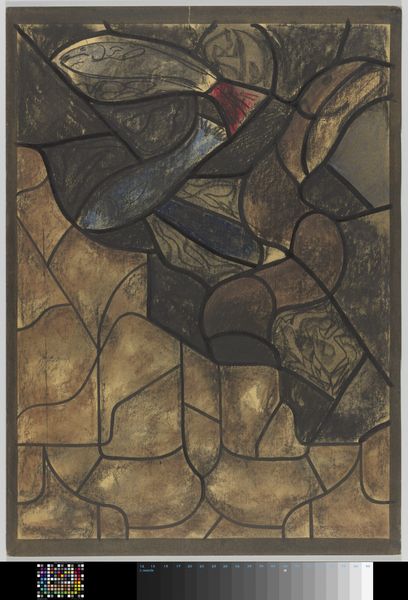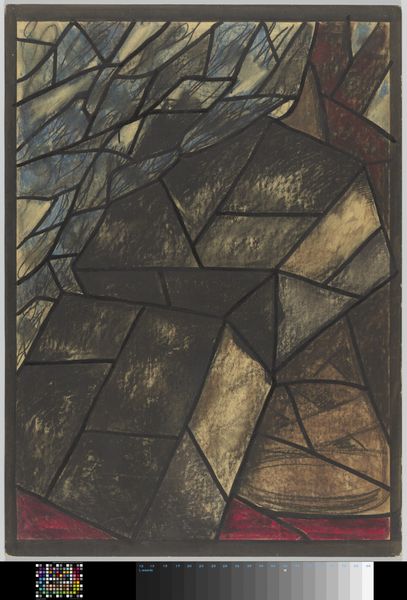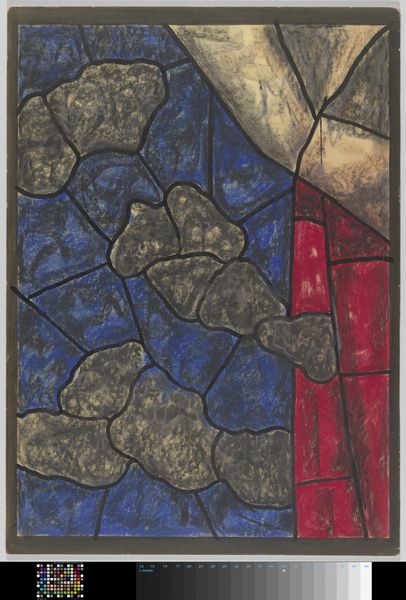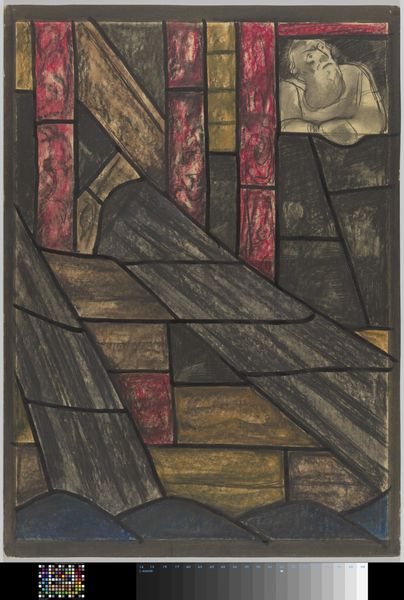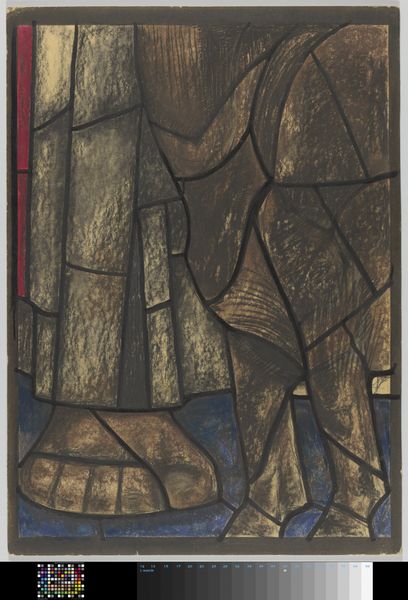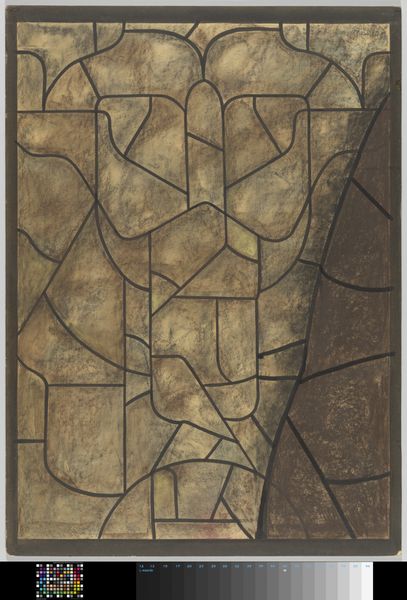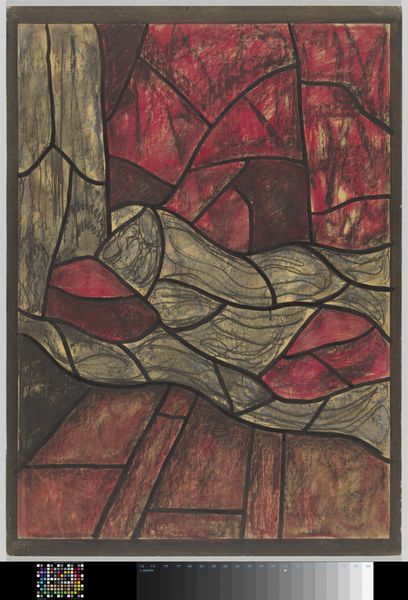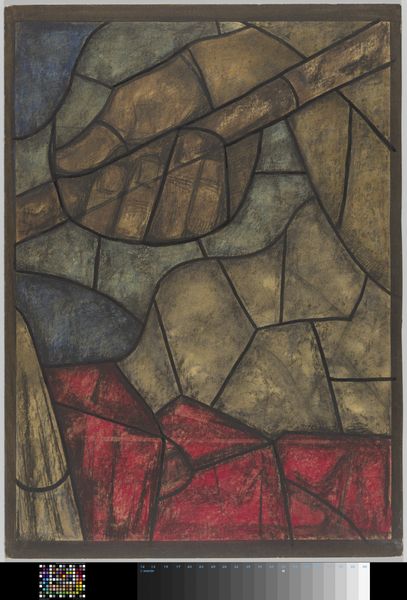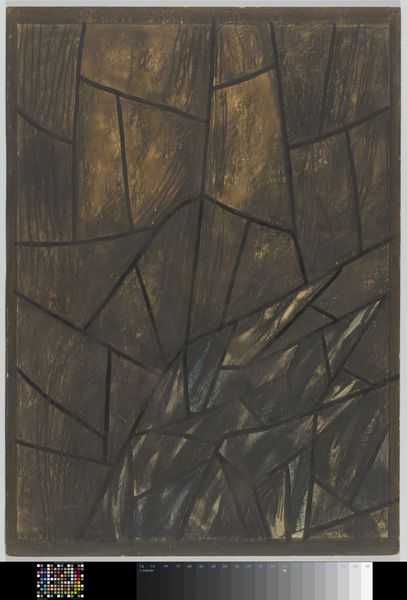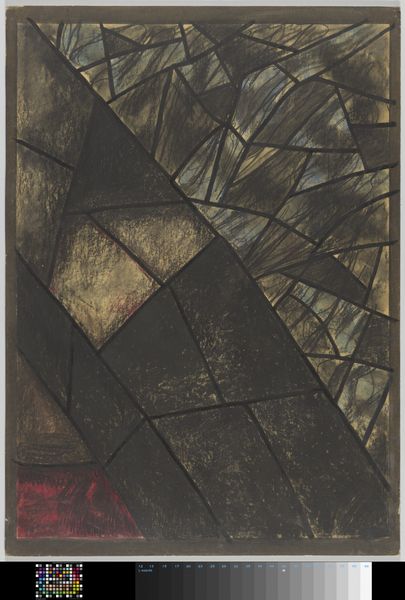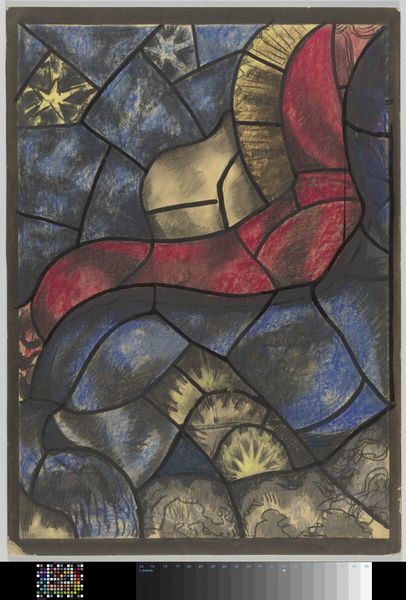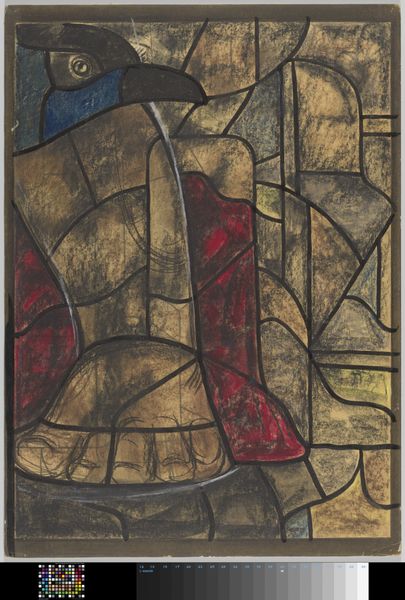
Ontwerp voor raam in het Noordertransept in de Dom te Utrecht c. 1934
0:00
0:00
drawing, mixed-media, paper, glass, architecture
#
drawing
#
mixed-media
#
toned paper
#
medieval
#
paper
#
glass
#
geometric
#
mixed media
#
architecture
Dimensions: height 1216 mm, width 808 mm
Copyright: Rijks Museum: Open Domain
Curator: This work before us is entitled "Ontwerp voor raam in het Noordertransept in de Dom te Utrecht," or "Design for a Window in the North Transept of Utrecht Cathedral," by Richard Nicolaüs Roland Holst, created circa 1934. Editor: It's instantly striking. A powerful sense of medieval gloom. The geometry, however rough hewn, provides an oddly comforting structure. Curator: Holst's design provides a fascinating glimpse into the cultural currents of the time. The early 20th century witnessed a widespread revival of interest in medieval aesthetics. This work shows the impact of religious architectural in art. It reflects a nostalgic yearning for a more spiritually grounded past. Editor: The composition, too, leads us back in time. The thick black lines that frame each color field pull the eye across a structured space—with such a severe limitation in hue. It gives the impression that each section needs a certain light to be fully realized. There's a powerful contrast implied, though unseen. Curator: Absolutely. Holst was deeply involved in the cultural politics of his day, seeking to infuse art with a moral purpose and a sense of national identity. He drew on the history of stained glass art—not only as craft, but as public proclamation. Editor: Indeed. Look at how those deep reds anchor the lower portion, hinting at some narrative force striving upwards. While the upper section suggests light and an otherworldly illumination to balance the depths below. The medium, seemingly mixed, perfectly captures a feeling of roughness but also possibility. Curator: Precisely, stained glass has served as a vehicle for ideological statements, influencing public opinion through its imagery and symbolism. And it's important to recognize that commissions for cathedrals are also tied to particular socio-political groups. Patrons are integral when attempting to decode meaning. Editor: I see now how Holst plays between architectural planes as both the framework of his art and the idea from which it's constructed. It's that connection which solidifies how truly unique this piece stands in Holst's body of work. Curator: Holst's design serves as a window—both literally and metaphorically—into the cultural and political landscape of his era, highlighting how artists navigate and negotiate societal forces to shape their creative output. Editor: I concur; those fractured lines dividing light from dark are also showing how an individual seeks spiritual truth during such turbulent times, it offers me new ways to contemplate my understanding of this historical period.
Comments
No comments
Be the first to comment and join the conversation on the ultimate creative platform.

